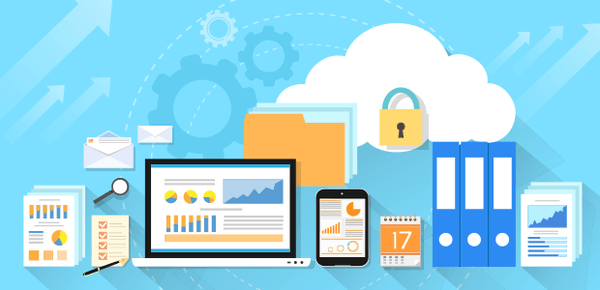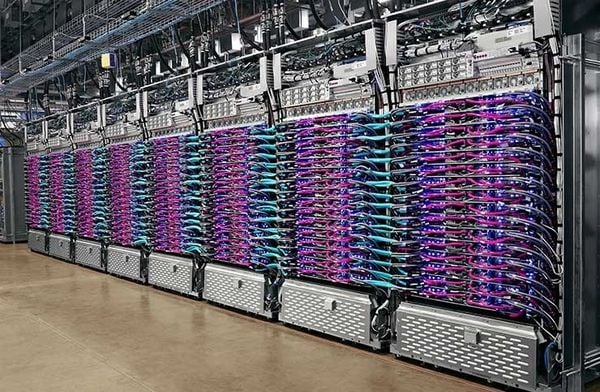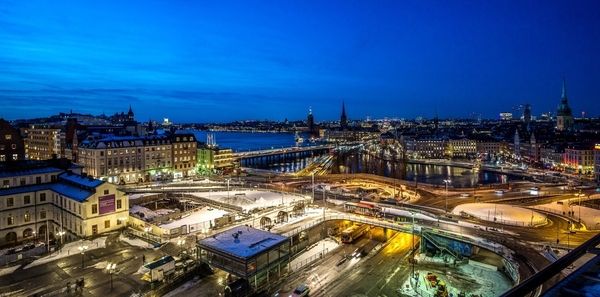
Backup and Disaster Recovery Best Practices
June 11, 2020
8 Ways 5G Will Change Cloud Computing
June 16, 2020Data centers are crucial to the modern world, but because these servers are working 24/7 at extremely high rates it gets immensely hot. Complex cooling systems are used to ensure these servers continue working without overheating. Cooling systems have become more and more hi-tech to keep up with our current usage and the servers’ excess heat. But a company in Stockholm is using this excess heat to warm residential areas instead of neutralizing it.

Photo Source: datacenterfrontier
Data Center Cooling Methods
Cooling systems continue to evolve over there years becoming more hi-tech than ever before. Engineers continue to innovate from one method to another. Datacenter cooling traditionally consists of two different methods—air-based cooling and liquid-based cooling. Within these two main methods are different variations that we discuss.
The first method in air-based cooling is “cold aisle/hot aisle”. This method separates the cold air from the hot air. This is done by facing the cold sides of each cabinet away from the hot sides. This creates a convection system where the cabinets cool themselves. Next is the “cold or hot air containment”. By isolating the cold air and hot air and driving the air directly from the CRAC unit helps cool the servers. The last method in air-based cooling is called “in-rack heat extraction”. This method adds compressors and chillers to the rack itself.
The first method under liquid-based cooling is “water-cooled racks and servers”. This method has water running alongside the hot side of the cabinet to bring the temperature down. The water flows through pipes and never touches the components. And the last method we will discuss is “liquid immersion cooling”. This method uses a special fluid that doesn’t conduct electricity, which allows the servers to be completely emerged to be cooled.
These methods were introduced in hopes to find the best way to cool down and get rid of excess heat from the servers. But maybe neutralizing the excess heat was never the best idea. People are finding ways to use this extra heat to warm homes.

Photo Source: cloudcomputersguide
Unique data centers around the world
There are many unique data centers around the world. From data centers built in a nuclear bunker, in an underwater submarine, inside of a mountain, or located in the arctic circle—data centers are being built in unique locations for many different reasons including security or built-in cooling. One of the most interesting data centers is located in Finland. This data center is built underneath a 19th century Eastern Orthodox cathedral in Helsinki called Uspenski Cathedral.
Because this 19th-century cathedral data center is located underneath the Cathedral in an underground cave the regulated environment reduces energy. Not only that, but any excess heat is also pumped through pipes to heat homes in the surrounding area.
Heating homes with excess data center heat
Stockholm Data Parks is one of the company’s leading the charge in this idea. Under Stockholm Data Parks are multiple data centers are joining this initiative. IP-only, Interxion, and Advania data centers will join in building an energy-efficient data center campus in Kista, Stockholm.
This energy-efficient campus will be connected to Stockholm’s district heating system and will one of the most unique setups. Data center tenants will actually get paid for the wasted heat to heat nearby communities. After its construction, the extra heat will be enough to supply enough heat to 35,000 residential apartments in Stockholm.
This may sound like a farfetched idea, but Stockholm Data Parks opened up its first campus in 2017. It was launched with three infrastructure companies, Fortum Varme, Ellevio, and Stokab. The first site is located in the suburb of Kista and has a similar plan as the upcoming new campuses. Data center operators are able to sell their wasted heat and buy cooling as a service.
This is a win-win scenario for all parties. Data center managers don’t have to worry too much about cooling down their data centers, the district heating system gets free heat, and everything is recycled to help everyone out. Stockholm Data Parks aimed to supply 10 percent of the city’s residential heating demands. Now with the new campuses making enough heat for 35,000 apartments, it seems as though the idea can not only transform the way we look at data center cooling, but it can transform the infrastructure of a city as well.

Photo Source: datacenter-insider
Building heat pumps in future data centers
The energy efficient data center campus design idea sends the excess heat through a liquid cooling system to a district heat system. Which will then heat up the homes nearby through the flooring. Because the liquid loses heat as it travels, the houses closest to the data center will be the ones that need the most heating. By the time it loops around back to the data center, it will be cool enough to cool down the data center. This looping process happens over and over again, heating houses nearby and eventually cooling the data center itself.

Photo Source: dataeconomy
Renewable Energy Data Centers
The environmental impacts of data centers is a topic that is often discussed. The United States alone will use about 73 billion kWh of power in 2020. This is why companies are looking into renewable energy to lessen their carbon footprint. Some of the biggest companies are using solar energy to power their operations. Apple, Amazon, Target, Walmart, Switch, and Google are leading the way with the most solar capacity installed. And Microsoft is pledging to be 100% carbon negative by 2030. This means Microsoft is planning to remove more carbon from the environment than it emits.
There are many advantages of solar power and other renewable energy. It reduces greenhouse gas emissions, reduces fossil fuel imports, and more. But this plan only focuses on not leaving a harmful impact on the environment. What Stockholm Data Parks and the 19th-century cathedral data center in Helsinki is doing is focusing on everyone in the area. There is no wasted heat and no wasted cooling. This is as renewable as it can get and at the same time taking care of everyone in the community. This idea turns the excess from data centers from a problem into a commodity.

